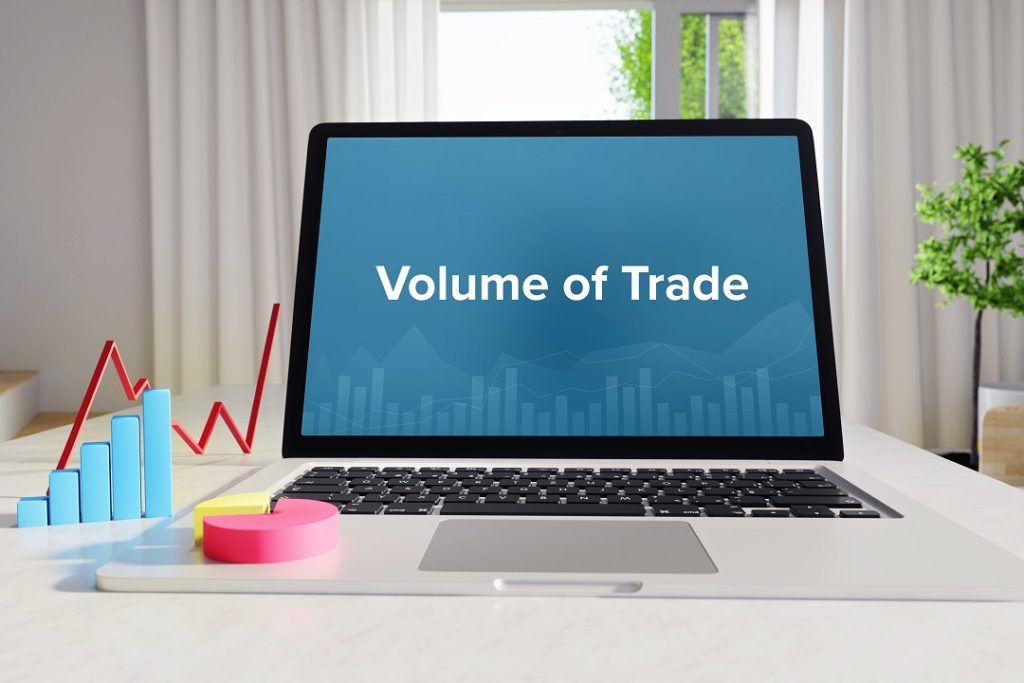The quantity of shares or contracts that belong to a given security traded on a daily basis.
What is Volume of Trade?
Volume of trade, also known as trading volume, refers to the quantity of shares or contracts that belong to a given security traded on a daily basis. In other words, trading volume provides a measure of the number of shares that are transacted between a given time period.

Trade volume is an indicator of the market activity and liquidity of a given security, e.g., stocks, bonds, futures contracts, options contracts, as well as all varieties of commodities. It indicates that the market is highly active, which means that it is easy for buyers and sellers to communicate and execute transactions. Similarly, when a security is traded less actively, its trade volume is said to be low.
Summary
- Volume of trade, also known as trading volume, refers to the quantity of shares or contracts that belongs to a given security traded on a daily basis.
- Trade volume is said to be high when a given security is traded more actively and vice versa.
- A higher trade volume is representative of better order execution and higher liquidity.
How is the Volume of Trade Expressed?
Every market exchange tracks its trading volume and provides volume data. Volume of trade numbers may be reported as frequently as once every hour throughout one trading day. Trade volumes that are reported on an hourly basis are estimates. Similarly, the volume of trade reported at the end of a trading day is also an estimate. The actual figures are not made available until the following day.
Example of Volume of Trade
Consider a market that is composed of two traders. The first trader, X, purchases 100 shares of stock Alpha and sells 50 shares of stock Beta. The second trader, Y, buys 200 shares and sells 100 shares of the same stock, Gamma, to X.
In such a situation, the total trading volume in the market would be 350. It is because 100 shares of Alpha were traded, 50 shares of Beta were traded, and 200 shares of Gamma were traded.
Trading Volume for Traders
In a situation where there is uncertainty over the future direction of the market among investors, the trading volume of futures contracts tends to increase. As a result, options and futures trading becomes more active.
Several major drivers of the increase in trading volume statistics in markets, especially in the US, include high-frequency traders and index funds. Such passive investors utilize high-frequency algorithmic trading, which is a huge contributor to overall trading volumes in stock markets.
Real traders, who transact in the market based on their own evaluations and expectations of market movements, only make up 10% of the total volume in US markets. The traders utilize trading volume as one of the factors used in their technical analysis while considering market trades.
It proves to be an extremely useful yet simple tool in the situation of large price jumps or drops. In cases of a drastic price increase, a high trade volume can act as a catalyst. When a high trading volume is associated with such changes, faith in the real value of the security tends to get reinforced.
Trade volume is also an important factor for traders when they are making trading decisions. They track a security’s average trading volume on a daily basis over a short term or even a longer-term period for the same. Usually, trading volumes tend to increase towards the beginning and end of a trading day. The same thing occurs on Mondays and Fridays as they mark the beginning and end of the trading week.
The rules and regulations regarding the usage of the by financial markets traders are set in the US by the Securities and Exchange Commission (SEC). In the United Kingdom, the Financial Conduct Authority (FCA) performs the function.
Surrogates for Trade Volume
Investors can also track the tick volume of a security, which signifies the number of changes in the price of a contract. It is because as the volume of trade increases, price changes also tend to become more frequent.
Similarly, the dollar value, which determines the total value of the shares that change hands over a specific period of time, can be used to determine the liquidity status of a security.